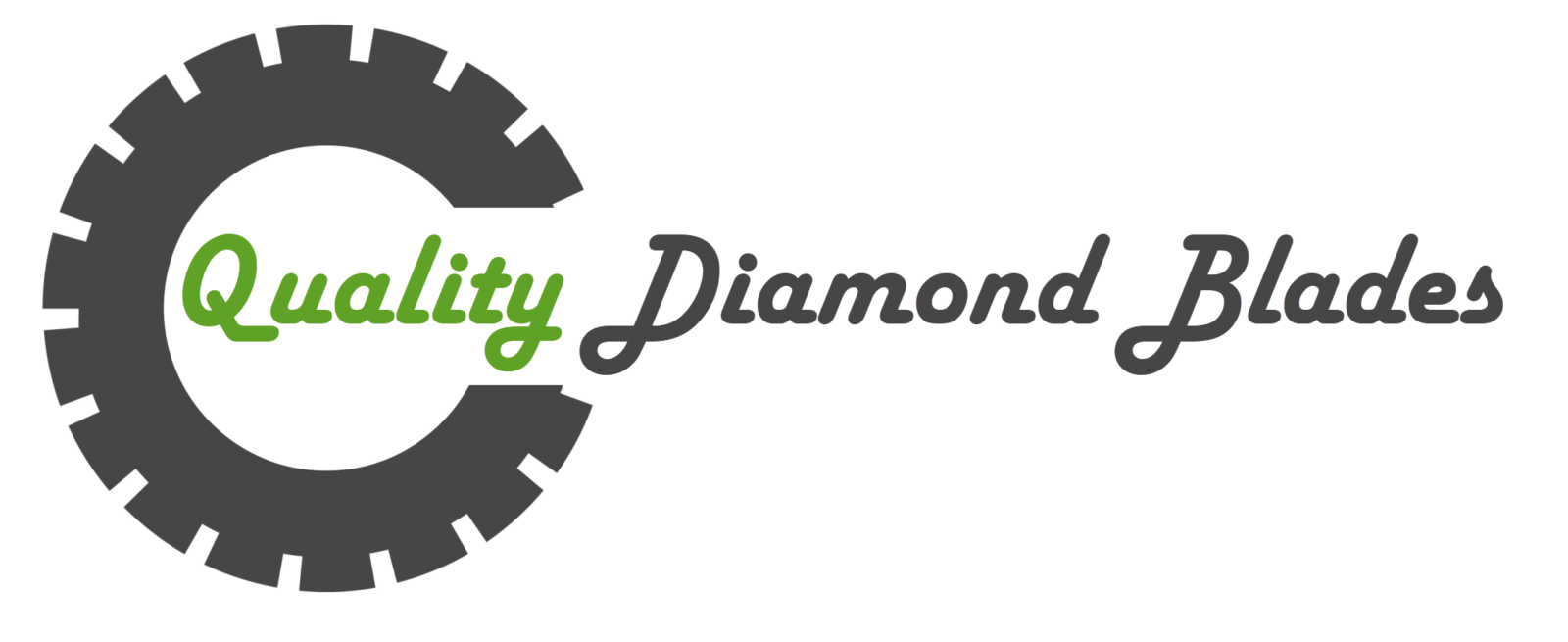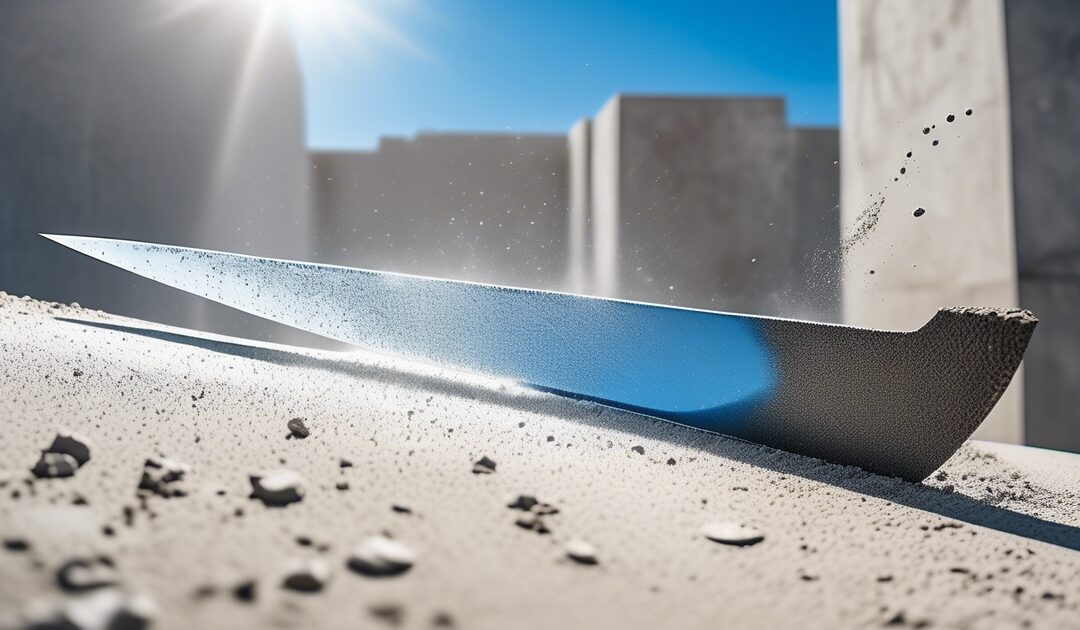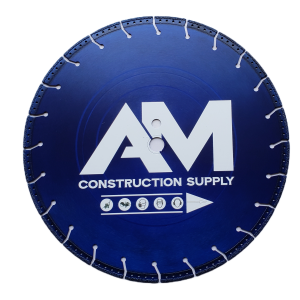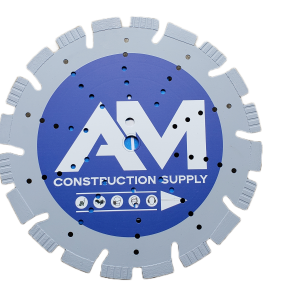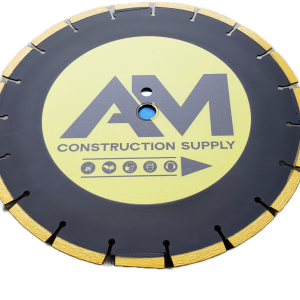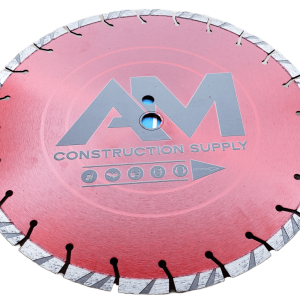Choosing the right blade for cutting concrete can feel like navigating a maze, given the plethora of options available. Historically, advancements in blade technology have transformed how we tackle concrete, moving from sheer brute force to precision and efficiency. Today, the quest for the best blade involves understanding materials, design, and application compatibility, including finding the right concrete saw, wet saw, and tip for the job. This post dives into the essentials of selecting a concrete-cutting blade that not only meets your project’s needs but also maximizes productivity and safety. From diamond-edged to abrasive blades, we’ll explore what sets each type apart in the realm of concrete work, ensuring you make an informed decision on your next purchase.
Key Takeaways
- Understand Your Needs: Before selecting a blade for cutting concrete, assess the specific requirements of your project, such as the type of concrete and the depth of the cut needed.
- Choose Diamond Blades: For efficiency and precision, diamond blades are the best choice due to their durability and versatility in cutting through concrete.
- Consider Wet vs. Dry Sawing: Decide between wet and dry sawing based on your project’s environment and requirements. Wet sawing reduces dust but requires water, while dry sawing is more convenient but dustier.
- Prioritize Safety: Always follow safety measures, including wearing protective gear and ensuring proper ventilation when cutting concrete, to prevent accidents and health hazards.
- Maintain Your Blades: Regular maintenance extends the life of your concrete blades. Clean and check them for wear and tear after each use.
- Invest in Quality: Opting for high-quality diamond blades might be more costly upfront, but it pays off in the long run with better performance and fewer replacements needed.
Understanding Concrete Blades
Types Overview
Concrete cutting requires precise tools, and the choice of blade, with the right tip and sand, can make a significant difference in the outcome. Among the various options, diamond blades stand out as the top choice for most professionals. They are known for their durability and efficiency in cutting through concrete swiftly. However, it’s crucial to select the right type of blade for specific tasks to achieve optimal results.
Other blades like corundum and abrasive ones also play roles in concrete cutting but have distinct features. Diamond blades are superior due to their cutting speed and lifespan. Corundum blades, while cheaper, lack the durability and precision of diamond blades. Abrasive blades offer a cost-effective solution but wear down quickly and offer less precision. Understanding these differences is key to choosing the best blade for your project.
Sawing Methods
Dry Sawing
Dry sawing, recommended by blade manufacturers, is a popular method due to its no water requirement and ease of setup. It’s especially suitable for outdoor jobs where controlling dust isn’t a primary concern. Diamond blades are often preferred for dry sawing because they can handle the heat generated from friction without water cooling. However, this method produces significant dust, so wearing protective gear is essential to safeguard health.
Wet Sawing
Wet sawing offers advantages like dust suppression and cooling effects that extend the blade’s life. This method requires a steady water supply to keep the dust down and prevent overheating of the blade. Blades designed for wet sawing conditions often feature special segments or rims that allow easier water access to the cut line. This setup is ideal for indoor cuts or when working in sensitive environments where dust control is paramount.
Blade Materials
Corundum
Corundum blades serve as an alternative to diamond ones for certain applications where cost considerations outweigh performance needs. They’re less efficient and have a shorter lifespan than diamond blades but can be suitable for small jobs or materials that don’t require precision cuts. Their use is limited by these factors but remains an option for budget-conscious projects.
Diamond
Diamond blades are celebrated as the most effective choice for cutting concrete, thanks to their robust construction featuring a steel disc with a diamond-encrusted rim. This design allows them to cut through concrete with ease, whether in wet or dry conditions, making them highly versatile tools in construction projects.
Abrasive
Abrasive blades present a budget-friendly option for some cutting tasks, though they come with trade-offs like faster wear and reduced precision. These blades might be appropriate for rough cuts where finish quality isn’t critical or when working with materials that blunt more expensive blades too quickly.
Types of Concrete Blades
Corundum Masonry
Corundum masonry blades are a cost-effective option for masonry work. They are made from a hard, synthetic mineral that makes them suitable for cutting through brick and softer types of concrete. However, when compared to diamond blades, corundum masonry blades wear down more quickly on concrete. This means they might not be the best choice for heavy-duty or frequent concrete cutting tasks.
The main advantage of corundum masonry blades is their affordability. They offer a lower upfront cost than diamond blades. This makes them appealing for small projects or occasional use where budget is a concern.
Turbo-Rim
Turbo-rim blades are designed to cut quickly and smoothly through concrete. They feature a continuous rim enhanced with cooling holes or slots to prevent overheating during operation. This design allows for faster cutting without sacrificing the blade’s lifespan due to high temperatures.
These blades are versatile, suitable for both dry and wet sawing methods. The cooling mechanisms ensure that turbo-rim blades can handle extended periods of use without overheating, making them ideal for projects requiring long cuts in concrete.
Segmented
Segmented blades stand out due to their unique design, which includes separate segments attached by laser welding or sintering to the core of the blade. These segments have spaces or cooling slots between them, aiding in heat dissipation during cutting. This design feature makes segmented blades highly effective for deep cuts in concrete.
Segmented blades strike a balance between cutting speed and durability. While they may not cut as quickly as turbo-rim blades, their design ensures they can withstand more demanding jobs without wearing out too fast.
Circular Saw
Circular saws can accommodate various blade types for concrete cutting, making them incredibly versatile tools. The key is selecting the right blade diameter that matches the saw’s specifications to ensure optimal performance and safety.
Choosing the correct blade diameter is crucial because it affects the depth of cut and overall efficiency of the saw. Safety considerations are paramount when using circular saws with concrete cutting blades; ensuring compatibility prevents accidents stemming from improper fit or excessive vibration during use.
Diamond Blades Spotlight
Cutting Efficiency
Diamond blades stand out in the realm of concrete cutting. Their cutting efficiency surpasses that of other blade types. This efficiency stems from their design. Diamond blades cut through concrete faster and with greater precision.
Several factors influence this efficiency. The material of the blade plays a vital role. Diamond, being the hardest material, offers unmatched cutting power. The type of saw used also matters. Different saws exert varying levels of force and speed, affecting how well the blade cuts.
Durability
When it comes to lasting performance, diamond blades are unparalleled. They outlive other types of blades used for cutting concrete. This durability isn’t by chance but by design.
Several factors contribute to their longevity. The quality of the diamond segments, the bond that holds these diamonds, and the overall blade construction play crucial roles. Investing in a more durable blade might seem costly upfront. Yet, it proves cost-effective for long-term projects. You save on replacement costs and downtime due to blade changes.
Versatility
Diamond blades showcase remarkable versatility across different cutting scenarios. They’re not just limited to concrete but can slice through a range of materials with ease.
This versatility extends to both wet and dry sawing methods, adapting to various project needs without sacrificing performance or safety. Whether you’re dealing with reinforced concrete, brick, or even asphalt, diamond blades handle them all efficiently.
Advantages of Diamond Blades
Precision Cutting
Choosing the right blade for concrete cutting tasks is crucial. Diamond blades stand out because they provide clean and accurate cuts. This precision is not just about the blade itself but also involves the saw type and the operator’s skill. Together, they ensure cuts are exact, reducing waste and rework.
Diamond blades cut through concrete smoothly. They minimize chipping and cracking, ensuring a professional finish. The operator’s experience plays a role too. Experienced workers can achieve remarkable precision with these blades.
Reduced Dust
One significant benefit of using diamond blades, especially with wet saws, is reduced dust production. Wet sawing helps to keep dust levels low, protecting workers’ health and preserving the environment. It’s essential to wear appropriate protective gear to further reduce dust exposure.
Minimizing dust during concrete cutting has vast health benefits. It reduces the risk of respiratory problems and other health issues related to dust inhalation. It also lessens environmental pollution, making it a more sustainable choice for construction projects.
Longer Lifespan
Diamond blades have a much longer lifespan compared to abrasive or corundum blades. This longevity makes them cost-effective for frequent concrete cutting tasks. Investing in diamond blades pays off over time as they require fewer replacements.
Proper maintenance can extend their lifespan even further. Regular cleaning and checking for wear help maintain their efficiency. This durability not only saves money but also ensures consistent performance across numerous projects.
Choosing the Right Blade
Material Consideration
Selecting the right blade for cutting concrete is crucial. One must match the blade type with the concrete’s hardness. For hard materials, soft-bonded diamond blades are ideal. They allow faster cutting without wearing down quickly. Conversely, hard-bonded blades suit softer materials.
This selection significantly affects cutting efficiency and blade lifespan. A mismatch can lead to slow cutting speeds and quick wear-out of the blade, costing time and resources.
Saw Compatibility
Ensuring your blade fits your saw model is vital. Using incompatible blades poses risks. It can lead to reduced efficiency and even safety hazards during operation.
To avoid these issues, follow guidelines for selecting the right blade size and type for your saw. This ensures optimal performance and safety. Always check the manufacturer’s recommendations before making a choice.
Cutting Depth
The size and type of blade directly influence how deep it can cut into concrete. For tasks requiring deep cuts, choosing an appropriate blade is essential.
e blades are not designed for deep cutting. Knowing this limitation helps in planning projects and selecting tools that meet your needs.
Dry vs Wet Sawing
Benefits of Dry
Choosing the right blade for concrete cutting is crucial, but so is deciding between dry and wet sawing methods. Each has its unique advantages depending on the project’s needs.
Dry sawing stands out for its convenience and quick setup. It doesn’t require water, making it ideal for jobs where water access is limited or not desired. This method uses diamond blades designed to withstand high temperatures generated during cutting without water cooling.
It’s particularly suitable for small-scale or indoor projects. Since it can be set up quickly, it allows workers to make precise cuts without the preparation time needed for wet sawing setups. However, one must not overlook dust management strategies. The absence of water means that dust will be produced in large quantities, posing health risks if not properly managed. Employing dust extraction systems or wearing protective gear becomes essential to ensure safety during operation.
Benefits of Wet
On the other hand, wet sawing offers significant advantages in dust control and cooling. By using water, this method suppresses dust production, creating a safer environment for workers and reducing the risk of respiratory problems associated with concrete dust inhalation.
This method is well-suited for large-scale or outdoor projects where the mess created by water use is less of an issue compared to indoor settings. The cooling effect of water also extends the life of diamond blades, allowing them to cut through tough materials more efficiently without overheating.
Nevertheless, managing the water source becomes a critical aspect of wet sawing setups. Ensuring there’s adequate water flow to keep the blade cool while controlling spillage and runoff requires careful planning. This might involve setting up containment systems or recycling water used in the cutting process.
Safety Measures
Protective Gear
Safety features like protective gear are crucial when cutting concrete. Masks and goggles shield against flying debris and dust. These can cause serious eye injuries or respiratory problems if not properly guarded against. It’s important to choose gear that fits well and provides adequate protection.
Protective clothing also plays a significant role. It keeps the operator comfortable while preventing minor cuts and abrasions from debris. Long sleeves, gloves, and sturdy boots are essential. They protect against the harsh conditions of concrete cutting tasks.
Safe Operation Practices
For safe operation of concrete saws and blades, best practices must be followed. This includes adhering to manufacturer guidelines for blade and saw usage. Such guidelines ensure the equipment is used within its safety limits, reducing the risk of accidents.
Common safety hazards during concrete cutting include kickback, blade binding, and overexposure to dust. To avoid these, operators should use both hands on the saw, keep their work area clean, and use water when applicable to reduce dust. Following these practices minimizes risks associated with concrete cutting tasks.
Maintenance Tips
Cleaning Blades
Regular cleaning of concrete cutting blades is crucial. It ensures optimal performance and extends their lifespan. Different blades require unique cleaning methods. For diamond blades, a soft brush and mild detergent work best. Abrasive blades may need a wire brush to remove debris.
Proper cleaning impacts both cutting efficiency and safety. Dirt and concrete residue can affect the blade’s sharpness. This makes the job harder and more dangerous. Always clean your blades after use to maintain their condition.
Storage Solutions
Storing your concrete cutting blades correctly is as important as cleaning them. Proper storage prevents damage and accidents. For diamond blades, hang them on a rack in a dry, cool place. Abrasive blades should be stored flat to avoid warping.
The way you store your equipment directly influences its durability. Good storage practices protect the blade’s integrity and ensure it’s ready for the next job. This is essential for maintaining a safe working environment, especially following the “Safety Measures” discussed earlier.
Why Choose Quality Diamond Blades
Superior Performance
Quality diamond blades stand out for their exceptional performance in cutting concrete. These blades leverage advanced technology, making them highly effective and reliable for tough jobs. Their design incorporates diamonds, the hardest materials on earth, ensuring a sharp and durable cutting edge.
Many professionals prefer diamond blades over others due to their efficiency and precision. Studies and user testimonials often point to a significant difference in performance. Users note faster cuts with less effort, highlighting how these blades easily slice through even the most challenging concrete projects.
Cost-Effectiveness
Investing in high-quality diamond blades brings notable long-term savings. While the upfront cost might be higher than standard blades, the durability of diamond blades means fewer replacements over time. This balance between initial investment and extended lifespan makes them highly cost-effective.
Scenarios showcasing their cost-effectiveness include large-scale construction projects or frequent concrete cutting tasks. In these cases, the reduced need for blade replacement not only saves money but also minimizes downtime, boosting overall productivity.
Customer Support
Selecting a concrete cutting blade isn’t just about the product itself; manufacturer support plays a crucial role too. Quality brands offer comprehensive customer support, including warranties, technical assistance, and after-sales services. These benefits significantly enhance the value of your investment in quality diamond blades.
Good customer support ensures you get the most out of your blade throughout its life cycle. It offers peace of mind knowing that help is available whenever you encounter issues or have questions about maintenance—connecting back to our previous discussion on maintenance tips for longer blade life.
Summary
Choosing the right blade for cutting concrete is crucial for both efficiency and safety. Our exploration from understanding to maintaining concrete blades, especially diamond blades, equips you with the knowledge to make informed decisions. Diamond blades stand out for their durability and precision, offering a superior solution for various concrete cutting needs. Whether you’re dry or wet sawing, remember to prioritize safety measures and regular maintenance to extend your blade’s lifespan.
Now, it’s your turn to put this knowledge into action. Selecting a quality diamond blade can significantly impact your project’s success. Don’t compromise on quality; invest in a blade that ensures clean cuts and long-term performance. Ready to elevate your concrete cutting experience? Choose the best blade today and see the difference for yourself.
Frequently Asked Questions
What is the best blade for cutting concrete?
Diamond blades are considered the best for cutting concrete due to their durability and efficiency in handling various concrete types, including reinforced concrete.
Why are diamond blades better than other types?
Diamond blades offer superior performance by providing faster cuts, longer lifespan, and versatility across different materials, making them a cost-effective choice.
How do I choose the right concrete blade?
Selecting the right blade involves considering the saw type, cut depth, wet or dry cutting preferences, and the specific nature of your concrete project.
Can diamond blades be used for both dry and wet sawing?
Yes, diamond blades are versatile and can be used for both dry and wet sawing. However, choosing the correct type based on your sawing method enhances performance and safety.
What safety measures should I follow when cutting concrete?
Always wear protective gear including goggles, gloves, and dust masks. Ensure your equipment is in good condition, follow manufacturer guidelines, and use water when wet sawing to reduce dust.
How often should I maintain my concrete cutting blade?
Regular maintenance after each use is crucial. Clean the blade to remove debris and inspect for wear or damage to ensure optimal performance and longevity.
Why should I invest in quality diamond blades?
Investing in quality diamond blades ensures efficient, precise cuts while reducing replacement costs over time due to their enhanced durability compared to lower-quality alternatives.
